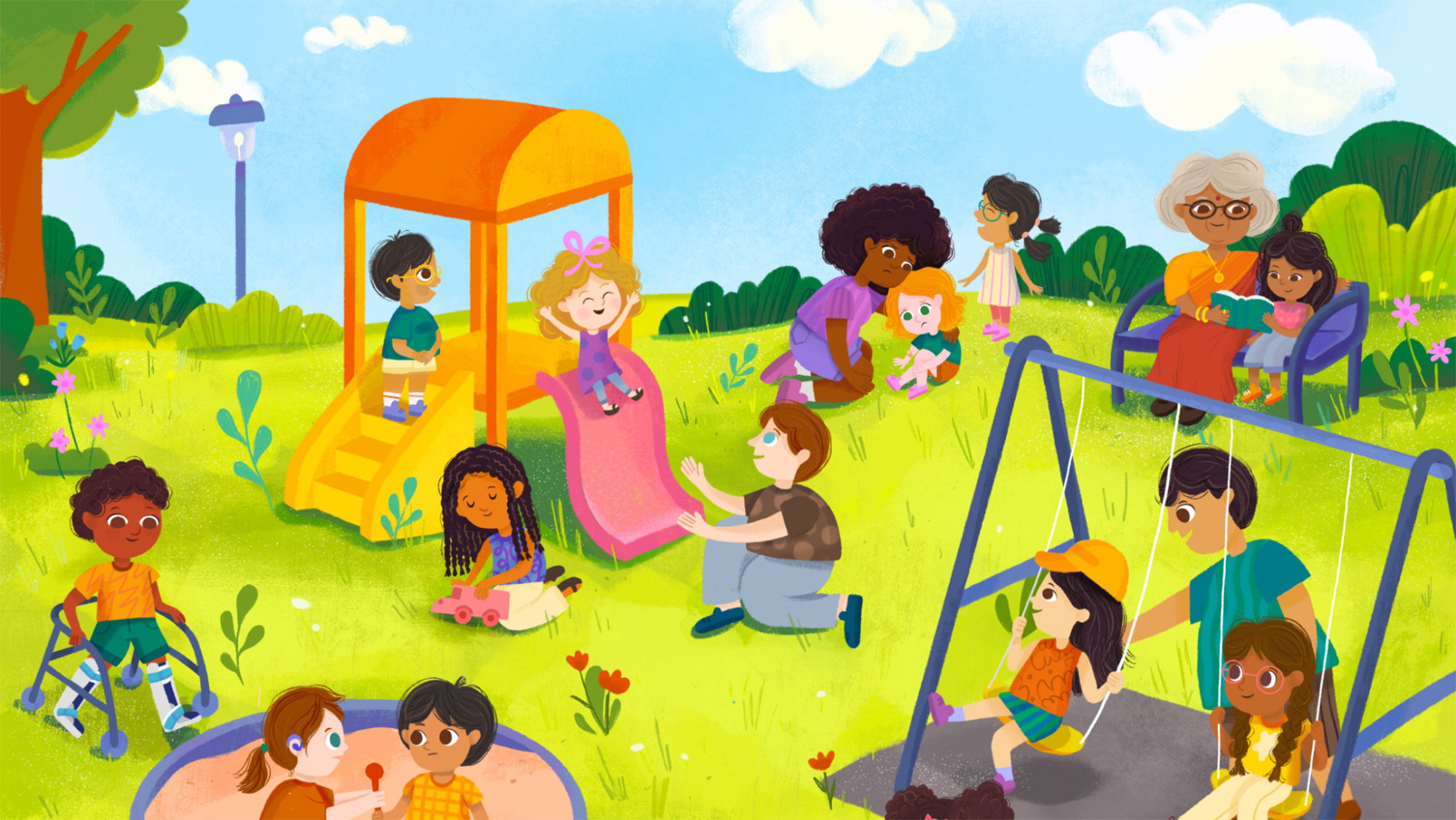Author and advocate Heather McGhee has said, “Everything we believe comes from a story we’ve been told.” Whether they come from our families, the pages of a book or through a screen, stories shape our understanding of the world and how we relate to one another. And the subject of the most persistent and divisive misunderstandings today… what else but race?
Noggin, Sparkler Learning and Paramount’s Content for Change approach the topic with humility, listening to parents first and then committing to being their nonjudgmental partner. Discussing Race With Young Children: A Step-by-Step Activity Guide takes a proactive but nonjudgmental approach to supporting parents, caregivers and educators.
The Guide
- sparks conversations about the differences in people’s appearances
- uses family photos to generate discussions about different kinds of families
- identifies racist behaviors and how to stand up to them
- introduces kids to a range of cultures and celebrations
- highlights the fact that everyone has feelings, fostering the attitude of empathy
👉 Explore the Guide (and print it in English, Spanish or Chinese)
A Finger on the Pulse
Makeda Mays Green, senior vice president, Digital and Cultural Insights at Nickelodeon, says, “We’re always working to keep our finger on the pulse of kids and families, and today’s kids comprise the most diverse generation ever.”
The team sought to understand and engage with new audiences in a world where half of our audience belongs to a family of color. Michael Levine, chief of Learning and Impact at Noggin, says, “Our perspective as a kid’s media organization is not to be political, but to follow the facts where they lead us to.”
Rooted in Research
The Shades of Us study, which ran from 2019 to 2021, included a survey of 15,000 parents and interviews with more than 50 parent-child pairs about different evidence-based, real-life scenarios. The researchers found that families are having conversations about race and racial bias at different stages.
Unmistakably, George Floyd’s murder and the subsequent reckoning has a lot to do with this project, but Julia Levy, who leads Sparkler Learning, clarified that the effort is more than a response to a crisis. “We should be having these conversations with our children as early as possible,” she says, “and as openly as possible, so that they can know that it’s safe to talk about what they’re seeing.”
👉 What Do Young Children Know about Race? You Might Be Surprised.
Dr. Colleen Russo Johnson, vice president, Digital and Cultural Consumer Insights at Nickelodeon, adds, “Young children are so susceptible to different messages, which is why it’s important for parents and caregivers to find age-appropriate ways to discuss big topics.” She underscores the importance of the photo activities that make it easy for adults and children to explore together. Julia adds that the guide can be used everywhere—on the playground, in the grocery store or while reading a book or watching TV together.
The Shades of Us research showed white parents, in particular, were avoiding these conversations. Sometimes they changed the subject. Sometimes respondents hid behind declarations of “color blindness”—though the research shows that children as young as three months recognize that people have different skin color.
👉 Color Blindness Is Counterproductive (The Atlantic)
Why aren’t families having these conversations? Russo Johnson offers a generous interpretation: They didn’t know how to have them. They would rather not have them than accidentally say the wrong thing and maybe make things worse. “People have good intentions,” she says. “Most of us want a more fair and equitable world, but we just don’t know how to get there. So we’re really just learning as we go.”
A Measurable Difference
In addition to parents and caregivers finding the guide on their own, it is reaching families through public-private partnerships. The city of San Francisco requested the Chinese version. New York City is using the Spanish version.
Before using the guide, parents were asked how prepared they felt having these conversations, and they averaged 2.4 on a scale of 1 to 5. With the guide, it was an average of 4.6.
The Black parent of a three-year-old called it “a parent’s dream come true.” A Hispanic parent said, “It helps you figure out what you need in order to teach your kids the proper way to talk about racism.” A white parent reported, “It’s a place that you can really understand a lot without being embarrassed or misunderstood.”
For Mays Green, a moment in the middle of this project crystallized the power of media and stories. Her six-year-old daughter, Journey, was reading a book about racism and segregation, and she said, “Mom I have an idea.”
As Mays Green recalls, “And I grab my camera because I’m thinking, ‘Oh my goodness, let me see what this great idea is.’ She goes to the printer for a sheet of white paper and begins to cut it into strips, showing me how she can tape them to her arm to change the color of her skin.”
Her lesson from the experience: “As a media professional and as a mom, I can never forget there’s still work to be done and that collectively we have to do better.”
This isn’t research for the sake of research, notes Russo Johnson. “We can’t ignore people’s real experiences of racism. We want our kids to be people who step in to stop racism.”
The moral of Discussing Race With Young Children: Everyone deserves an opportunity to belong. As Mays Green says, the project is about inspiring “all people to value all people.”
These conversations are difficult; they can be painful, but they can also be quite powerful. The Guide models the kind of dialogue the whole country needs right now—adults as well as kids.

Mark Swartz
Mark Swartz writes about efforts to improve early care and education as well as developments in the U.S. care economy. He lives in Maryland.





